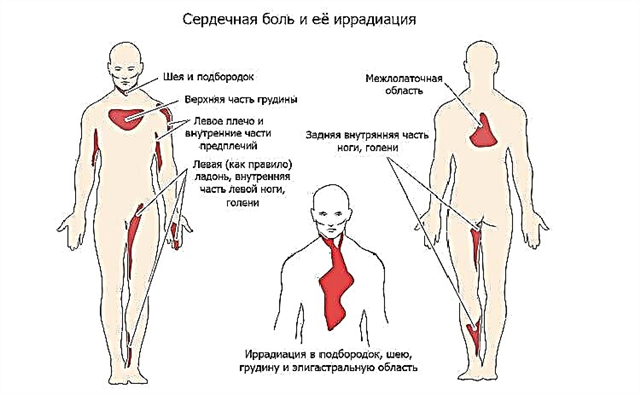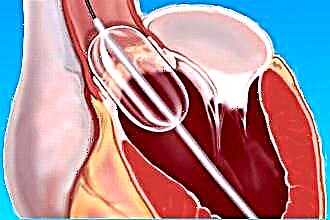Vegeto-vascular dystonia of the brain is not an independent pathology with manifestations in the form of a symptom complex accompanying the underlying pathology:
Systemic intraorgan diseases (widespread atherosclerosis, pancreatitis);
- Persistence of foci of chronic infection;
- Disorders of the endocrine system - the thyroid gland, adrenal glands, pituitary gland, ovaries;
- Pathology of the central and peripheral nervous system, volumetric processes of the brain;
- Degenerative diseases of the cervical spine;
- Overwork, stress.
Physically and emotionally exhausted people are at greatest risk of developing neurocirculatory dystonia. Additional provoking factors are smoking, alcoholism, mental instability, hysterical personality type, depressive conditions, constitutional features, prolonged lack of sleep, chronic fatigue, and poor nutrition. Men suffer from this pathology more often than women. Angiodystonia is often associated with a genetic predisposition, abnormal pregnancy, birth trauma, hypoxia during childbirth.
In children, the symptoms of cerebral dystonia appear as a response to a hormonal surge, inconsistent development of the cardiovascular and muscular systems, which are superimposed on an intensive educational process (exams). In adults, the disease is latent, sluggish, exacerbated in the autumn-spring period, with psycho-emotional overwork or against the background of a decrease in immunity.
Symptoms of cerebral dystonia
The disease has a variety of manifestations, depending on many factors (type, form of the disease, background conditions). A symptom of concern for all types of disease is headache... It has a different etiology, character and is localized in the temporal, parietal, occipital regions.
Additional signs:
Vertigo;
- Increased intracranial pressure - nausea, vomiting, puffiness of the eyelids;
- Deterioration of memory, attention, intellectual potential;
- Noise in ears;
- Nervous and mental disorders;
- Sleep disorders, apathy;
- Subjective feeling of lack of air, body aches, fullness in the head;
- Focal symptoms - visual and auditory disorders, convulsions, impaired sensitivity, paresthesias, flaccid paresis of the extremities, muscle hypotension, tics, unsteadiness of gait.
The symptoms described above vary in patients with different types of dystonia.
It is worth remembering that angiodystonia of the cerebral vessels can proceed in the form of spasm or expansion of the vascular bed.
Therefore, they distinguish:
Hyperkinetic type (hypertensive) is characterized by increased pressure in the blood vessels and increased heart rate and is manifested by pain in the back of the head, pulsation in the temples. This type of dystonia is more often complicated by hypertension and stroke.
Hypokinetic type (hypotonic) is characterized by paretic vasodilation and a decrease in the speed of blood circulation and pressure in them. Manifested by sudden dizziness, weakness, loss of consciousness, cold extremities.
Normotonic type characterized by the onset of symptoms only in response to strong psycho-emotional stress. Symptoms of both hyper- and hypokinesis of the vascular wall are inherent in this type.
Cardiac type differs in the prevalence of symptoms of cardiac dysfunction. Unpleasant sensations in the region of the heart, sudden acceleration or deceleration of the rhythm, extrasystoles, arrhythmia.
What to do in case of manifestations of VSD according to the cerebral variant?
When the above symptoms appear, the patient underwent a comprehensive examination in order to exclude organic pathology, to find out the reasons for the development of VSD. Further treatment tactics will depend on this.
Required research list:
Clinical analysis of blood, urine;
- Functional examinations - EKG, USDG (dopplerography of the vessels of the head and neck), roencephalography, EEG;
- X-ray of the cervical spine, skull;
- Consultation with a neurologist, gynecologist, endocrinologist, ophthalmologist, dentist, ENT specialist;
- If necessary, MRI or CT.
The diagnostic criteria for the syndrome of vegetative-cerebral dysfunction of cerebral vessels are deterioration of blood flow, small diameter of the cerebral arteries, and a decrease in the resistance of the vascular wall.
The identified pathological condition must be differentiated from other organic vascular and psychosomatic diseases.
Treatment and monitoring of a patient with cerebral angioedema
Before starting treatment, it is worth determining the etiology of dystonia. The influence on the main pathogenetic link increases the chances of a complete cure.
Directions of treatment:
- Etiological treatment - correction of the underlying disease that provokes VSD;
- Normalization of vascular tone;
- Symptomatic therapy;
- Lifestyle correction, psychotherapy.
The treatment of uncomplicated angiodystonia is based on physiotherapeutic methods (remedial gymnastics, hydromassage, manual therapy, acupuncture, herbal medicine, aromatherapy), as well as elimination of provoking factors (refusal of alcohol, tobacco, reduction of stress levels, rehabilitation of foci of chronic infection, if necessary, change of place work and residence). Psychotherapy with auto-training elements is quite effective.
Medical treatment of vascular dystonia of the brain is reduced to the normalization of the relationship of the hypothalamic and limbic systems with the rest of the internal organs. The course of treatment is prescribed for a long time.
Groups of drugs:
Herbal sedatives - valerian, motherwort tincture, Sedavit, Persen; if ineffective - barbiturates or bromides (Elenium, Sibazon, Fenozepam, Grandaksin, Afobazol; They relieve emotional and mental stress, anxiety, fear, normalize autonomic reactions.
- Drugs that improve cerebral blood flow (neuroangiocorrectors) - Stugeron, Cinnarizin, Cavinton;
- Drugs with nootropic effect - Piracetam, Nootropil;
- Antidepressants - Amitriptyline, Fluoxetine, Paroxetine. Caffeine-based psychostimulants, antipsychotics;
- Alpha or Beta-blockers (for hypertensive type) - Anaprillin, Phentolamine, Prazosin, Sotalol, Bisoprolol; ACE inhibitors - Berlipril, Enalapril; Ca blockers2+ channels - Amlodipine, Nifedipine;
- With a hypotonic type - methylxanthines (Euphyllin, Theophylline), M-anticholinergics (Atropine);
- Vitamin complexes, antioxidants, diuretics, adaptogens with extract of Eleutherococcus, Schisandra, ginseng;
- Glycine - to reduce the excitability of the vegetative link of the nervous system, improve metabolic processes in the brain.
As a rehabilitation for VSD, they use a stay in a sanatorium with the use of water procedures (swimming, wrapping, contrast shower, hydromassage), walking in the fresh air, phyto-baths (coniferous, nitrogen, valerian, iodine-bromine, hydrogen sulphide, radon, carbonic). It is also recommended to take a course of electrophoresis, electrophoresis.
Conclusions
It is worth considering that the successful treatment of angioedema depends largely on the patient himself. An important component of therapy is a healthy lifestyle (daily regimen, full sleep, alternation of mental and physical stress, reducing the time spent with gadgets, walking in the fresh air, playing sports, hardening).In milder forms, it is possible to do without medication support.
Unfortunately, it is impossible to predict the possibility of developing angioedema syndrome. But secondary prevention of the consequences and deterioration of the condition is real: supervision of a neurologist, rejection of bad habits, a rational mode of work and rest, correction of concomitant diseases.



